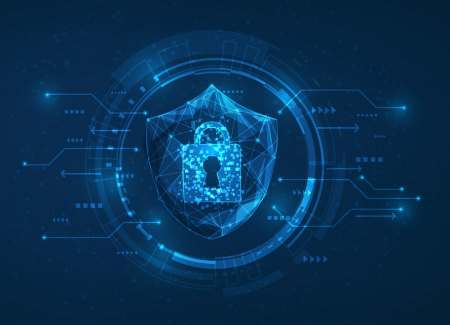7 Worst Types of Cyberattacks and Threats in 2023 (Solutions Included)

Our lives have become more convenient today with the introduction of digital devices and the internet. While there is a good side to it, there are some challenges that range from data privacy to different types of cyberattacks and threats.
Cyberattacks have become more prevalent, and attackers are changing and improving methods every day. Moreover, they (attackers) can access emerging cybersecurity attacks and viruses on the dark web as easily as you can sign up for a social media account.
Besides seeking professional help from cybersecurity experts, having a clear understanding of different types of cyberattacks and threats and everyday steps to protect yourself from cyber threats can minimize the effects of a cybersecurity attack
What is a Cybersecurity threat?
 A cybersecurity threat is a malicious attack by an individual, group, or organization to gain access to an individual or company’s network, data, or confidential information. Sometimes these attacks are made to disrupt business operations or damage important information.
A cybersecurity threat is a malicious attack by an individual, group, or organization to gain access to an individual or company’s network, data, or confidential information. Sometimes these attacks are made to disrupt business operations or damage important information.
So, most cybersecurity threat comes from corporate spies, lone hackers, or disgruntled employees.
What is a Cyberattack?
An unauthorized system or network access by a third party is known as a cyberattack. Therefore, those who carry out a cyberattack are called hackers or attackers.
Hackers break into an individual or company’s computer system or network to gain unauthorized access to critical business information, steal data, or cause damage to the company’s network.
Key takeaways
- Organizations or individuals unaware of cyberattacks can end up suffering huge losses
- Cyberattack is performed by an individual or group using one or more tactics
- Hackers try to identify vulnerabilities, problems, or weaknesses in a computer system and exploit them
Different Types of Cyberattacks and Threats
Now, let us look closely at the top seven cyberattacks and threats that can affect an individual or a company.
1. Malware Attack
The most common type of cyberattack and threat is a malware attack, where malicious software is installed into the central computer system of an organization to export confidential information. Therefore, Malware is usually established through a malicious link or email that gets activated as soon as the user opens it.
There are multiple versions of malware, such as worms, spyware, ransomware, viruses, and trojans.
2. Phishing Attack
Phishing is a type of social engineering that tricks users into giving up sensitive data such as passwords, usernames, bank account details, etc. In this type of cyberattack, an attacker impersonates a trusted contact and sends the victim fake emails or messages. Therefore, when the victim opens the email, attackers gain access to confidential information.
3. Man-in-the-Middle Attack
In this type of cyberattack and threat, the attacker comes in between a two-party communication to steal and manipulate sensitive data. Sometimes hackers set up fake wi-fi networks or install malware on the user’s computer or network to steal information.
This cyber threat is also known as an eavesdropping attack, where the attacker aims to gain access to critical business or customer data.
4. SQL Injection Attack
SQL injection attack occurs when the attacker hacks into the database of the company and uploads malicious SQL codes. Thus, the attacker can view, edit, and delete tables from the databases. In addition, they can also access sensitive information related to your business.
5. Denial-of-Service Attack
This is a massive threat for organizations since the attackers target the servers and networks of the company.
In this attack, hackers flood a company’s server with continuous requests that exhaust their resources and bandwidth. Moreover, this attack is also known as a DDoS (Distributed Denial-of-Service) attack.
6. Insider Threat
As the name suggests, this is done by an insider and can cause tremendous damage. Now, an Insider threat is a malicious attack on a company’s network or computer system by a person with authorized system access. Therefore, It is also known as an Insider attack.
7. Cryptojacking
Cryptojacking is a cybersecurity threat that involves breaking into a company’s network or computer for mining cryptocurrency. Hence, the main aim of this cyberattack is to make a profit. Moreover, this attack is caused by infecting a website or manipulating the victim to click on a malicious link.
Cybersecurity Courses
How to Avoid Cybersecurity Threats?
Here are some ways in which you can prevent cyberattacks:
- Regularly change passwords. Remember that solid alphanumeric passwords are difficult to crack. Moreover, never use simple passwords or the same password twice.
- Make sure to update the operating system and applications regularly. Eventually, this will remove vulnerabilities.
- Do not open emails from unknown senders. Instead, use a VPN to ensure the traffic between the VPN server and your device is encrypted.
- Back up data regularly. This is because, in case of a cyberattack, you can erase the system’s data and restore it with a backup.
- Be aware of cybersecurity principles, types of cyberattacks and threats, and ways to tackle them.
- Use two-factor or multi-factor authentication. This is a vital step to secure your account from alien infiltrations. Moreover, it enables you to have complete control over your data.
- Do not use public Wi-Fi without a VPN. This way, one can stop malware transmission and other cyberattack viruses from infiltrating your device.
- Safeguard your mobile phones and do not install any apps that can expose your essential information.
- Develop an eye to identify fraudulent intrusions like emails, links, attachments, or invites from unknown sources.
- Work with up-to-date software and applications and invest in reliable firewalls with frequent updates.
How Can Businesses Manage Cybersecurity Risks?
There are different ways in which a business can tackle different types of cyberattacks and threats; here are some:
- Implement a risk management process to detect, assess, and manage an organisation’s IT security risks
- Create a robust cybersecurity architecture that complies with the current security standards and best practices
- Identify the risk metric that indicates the organisation’s current level of cyber threat and how much it will cost the organization to mitigate the risk
An average Indian household has many connected devices, such as laptops, phones, and smart devices. Moreover, every single one of that devices opens the gateway for a cyberattack.
According to the Indian Computer Emergency Response Team (CERT-In), there have been 12.7 lakh cyberattack incidents in 2022. Furthermore, the team also reveals that the attacks have significantly increased in the past few years and are expected to increase in the future.
However, the good news is that there has been a surge in skilled and trained cybersecurity professionals, making it easy for individuals and businesses to tackle different types of cyberattacks and threats.
Planning to make a lucrative career in cybersecurity? Take an advanced certificate course in cybersecurity or a related field. In addition, these advanced programs will equip you with the skills and knowledge to develop and implement strategies to improve the preparedness and response of an organization against a cyberattack.
Emeritus offers various in-person and online courses in cybersecurity in collaboration with renowned institutes like IIT, IIM, and ISB. Our programs are designed for fresh graduates and experienced professionals. Joining our courses will enhance your career.





